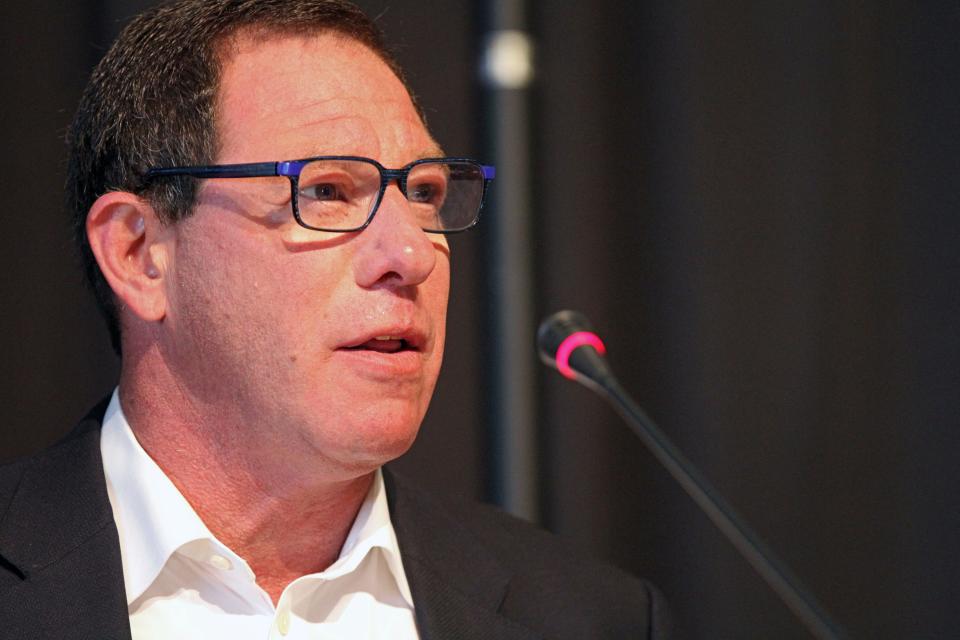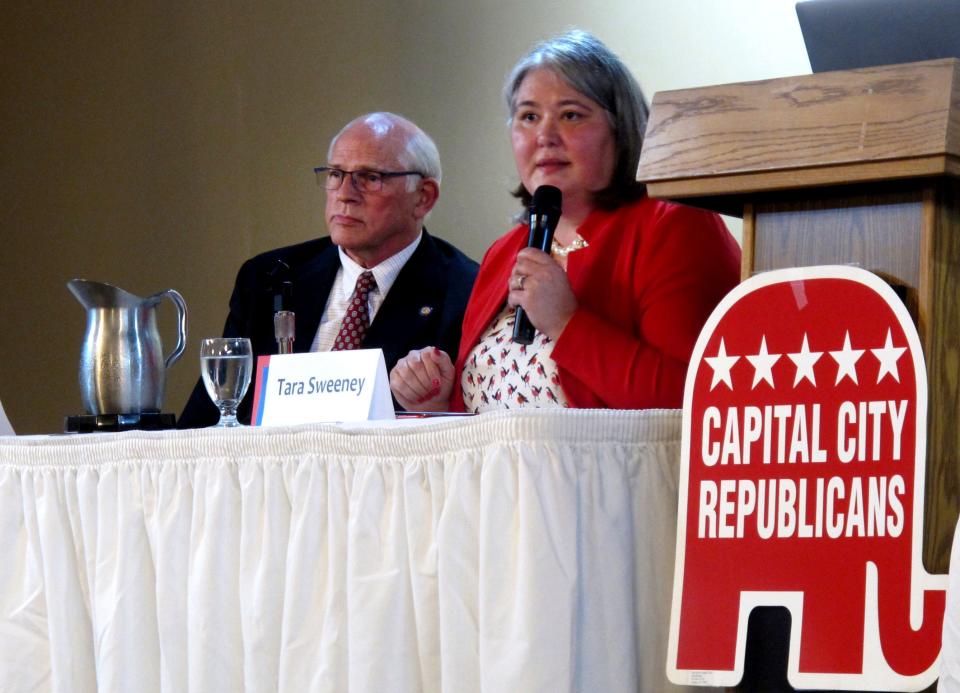Sarah Palin? Santa Claus? Alaska is having a bizarre special election: Here's what you should know
- Oops!Something went wrong.Please try again later.
- Oops!Something went wrong.Please try again later.
- Oops!Something went wrong.Please try again later.
Alaska is holding a special election to fill the state’s sole seat in the House of Representatives this Saturday.
One thing making this election so odd is its short timeline after Republican Rep. Don Young died on March 18. This means Alaskan voters had less than three months to decide on their preferred candidates for this election.
Here's what you need to know.
What makes Alaska's election odd?
Election officials had to scramble to schedule a special election for the House seat due to Alaska’s state laws and constitution.
Most voters will be casting their ballot by mail. There are in-person polling places, but most of them are in rural areas where mail deliveries are not as active. Most of these polling places will also close on Saturday as vote counting gets underway.
So far, as of June 8, over 110,000 voters have already submitted their mail-in ballot.
More primary elections: Could California be a warning sign for Democrats in the fall?Takeaways from the latest primaries on Tuesday
How many people are running?
Besides its short timeline and mostly mail-in voting, what makes this election even stranger is its flurry of candidates. Voters have to pick one preferred candidate out of 48 on the ballot.
Because the primary is nonpartisan, there is no Democratic or Republican primary to split the total number of candidates running for the seat. The ballot is filled with 22 Independent candidates, 16 Republican candidates and 10 Democratic candidates.

Who are some of the notable candidates?
On the ballot are familiar names in former Alaskan governor and 2008 Republican vice presidential nominee Sarah Palin and a progressive whose legal name is — and who bears a strong resemblance to — Santa Claus.
Palin is expected to cruise to the general election in August because she's such a familiar name to voters. She’s also riding on an endorsement from former President Donald Trump, who said in a statement she “will be a true America First fighter on the ballot to replace the late and legendary Congressman Don Young.”
Who else is running?
Other candidates expected to do well are Nick Begich III and Al Gross. Begich is running as a Republican for the seat previously held by his grandfather, Nick Begich Sr., who served before Young took office. He’s the executive chairman of a software development company called FarShore and has lent $650,000 to his campaign, raising ethics questions. The Alaskan Republican Party has endorsed Begich while declining to endorse any other candidates.
Al Gross is an independent who unsuccessfully ran for the U.S. Senate in 2020. He lost to incumbent Sen. Dan Sullivan by a margin of around 12 percentage points. He ran as an independent then but had the backing of the Alaskan Democratic Party. This election, however, he hasn’t committed to caucusing with any specific party. As a result, the Democratic Party has cut ties with Gross. On their Facebook page, they called Gross a “proven loser.”

What happens after this?
If any candidate wins more than 50% of the vote, that candidate wins immediately and will occupy the seat left by Young. However, if no candidate earns more than 50%, the top four candidates will move to a second round of voting in a general election on August 16.
Unlike the primary, where voters can only choose one candidate, the general election will be conducted with ranked-choice voting. Candidates will rank the four candidates in their preferred order.
The winner of that election takes the sole House seat and serves the remainder of Young’s term until January. Another general election will be held in November to determine who will occupy the seat afterwards.
Ranked-choice voting in the US: Alaska to use ranked-choice general election for Congress. Will others follow?
Why is Alaska doing their election this way?
A number of coincidences created this election.
At a press conference, Lieutenant Governor Kevin Meyer said special elections must be held 60 to 90 days after the governor’s proclamation of a special election. Election officials decided on a date of June 11 for the primary and August 16 for the general election.
In that same press conference, Director of Elections for Alaska Gail Fenumiai said an ongoing paper and labor shortage made it difficult to run an election where most voters go to a polling place.
An election without 'I voted' stickers?: Election officials scrambling amid paper shortage
“Given the compressed timeframe, the division did not feel we would be able to . . . pull off an in-person election,” said Fenumiai.
That compressed timeframe created a chaotic three months of campaigning. The nonpartisan primary leading to 48 candidates is because of a ballot initiative that voters approved in the 2020 general election, which created the ranked-choice general election for the top four primary candidates.
The sudden election combined with supply constraints and a ballot initiative in 2020 created the perfect storm.

Are there other races in Alaska on Saturday?
Because the election on Saturday was put together as a special election, Alaskan voters won’t have to think about anymore races that day. However, they might have to vote up to four separate times for this one House seat. Voters will vote on Saturday for the primary election. Then they will vote again in August for the general election if no candidate clears the 50% mark. The winner after this series of voting will serve the remainder of Young’s term, up until January.
Voters will also have to decide on a candidate to serve for the next two years in the coming midterms. For that tenure, a primary election will be held on August 16 and a general election will be held on November 8.
This article originally appeared on USA TODAY: Alaska primary: Sarah Palin, Santa Claus among 48 candidates running

